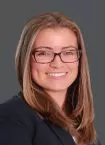- within Wealth Management and Law Practice Management topic(s)
The New Jersey Board of Public Utilities (NJBPU) announced that its third solicitation with a capacity target of 1,200 megawatts for New Jersey's offshore wind (OSW) development will now be released by January 2023, instead of the previously announced September 2022 date, to account for its ongoing transmission-planning efforts.
NJBPU's updated timeline takes into consideration New Jersey's ongoing offshore "coordinated transmission solution" efforts. In January 2021, PJM Interconnection, L.L.C. (PJM) filed with the Federal Energy Regulatory Commission (FERC) for approval of a study agreement that would begin the implementation of a State Agreement Approach (SAA) to explore new collaborative frameworks to advance offshore wind energy and enable New Jersey's offshore wind goals to be incorporated into the PJM transmission-planning process. Under the SAA, PJM and the NJBPU asked developers to "propose the optimal mix of onshore and offshore transmission facilities that provide the most economically efficient and reliable way of delivering power from offshore wind turbines to New Jersey customers."1 Developers were asked to propose:
- upgrades to the existing grid to facilitate the offshore wind development;
- extensions of the onshore transmission grid closer to offshore wind locations;
- optimal landfall approaches to minimize/reduce environmental impacts and any necessary offshore substations; and
- interconnections between offshore substations (also known as a transmission "backbone") to provide benefits of a networked offshore grid.
New Jersey is the first state within PJM to request that PJM initiate an SAA under the PJM Operating Agreement. On February 16, 2021, FERC accepted the SAA study approach.
Also in January 2022, PJM asked FERC (with the support of the NJBPU and other New Jersey state and environmental-sector stakeholders) to (1) accept and to allow PJM and the NJBPU to implement a proposed definitive SAA; (2) issue a favorable order on the SAA by April 15, 2022; and (3) permit the transmission planning that results from the SAA to be included in PJM's regional transmission expansion plan. PJM will review the more than 80 different proposals that were submitted by transmission developers for consideration in its SAA process; will provide its recommendations to the state; and New Jersey will select the best transmission solutions, the costs of which will be assigned only to New Jersey ratepayers.
Even though PJM's SAA process may result in more efficient and resilient transmission for OSW, FERC's SAA proceeding has attracted dozens of interventions and comments. In answers to those filings, PJM and the NJBPU have stated that the FERC acceptance of the SAA would not establish a rate, or even a specific methodology for rate design, and that the costs of a project that is adopted under the SAA will not be cross-subsidized by out-of-state ratepayers of non-New Jersey utilities in PJM.
The NJBPU's updated timeline for its next solicitation allows for the SAA process to be completed and the outcome to be incorporated into the third solicitation guidance documents.
Footnote
1 See "New Jersey Advances Offshore Wind Transmission Proposal at Federal Energy Regulatory Commission" (nj.gov)
Visit us at mayerbrown.com
Mayer Brown is a global legal services provider comprising legal practices that are separate entities (the "Mayer Brown Practices"). The Mayer Brown Practices are: Mayer Brown LLP and Mayer Brown Europe - Brussels LLP, both limited liability partnerships established in Illinois USA; Mayer Brown International LLP, a limited liability partnership incorporated in England and Wales (authorized and regulated by the Solicitors Regulation Authority and registered in England and Wales number OC 303359); Mayer Brown, a SELAS established in France; Mayer Brown JSM, a Hong Kong partnership and its associated entities in Asia; and Tauil & Chequer Advogados, a Brazilian law partnership with which Mayer Brown is associated. "Mayer Brown" and the Mayer Brown logo are the trademarks of the Mayer Brown Practices in their respective jurisdictions.
© Copyright 2020. The Mayer Brown Practices. All rights reserved.
This Mayer Brown article provides information and comments on legal issues and developments of interest. The foregoing is not a comprehensive treatment of the subject matter covered and is not intended to provide legal advice. Readers should seek specific legal advice before taking any action with respect to the matters discussed herein.




